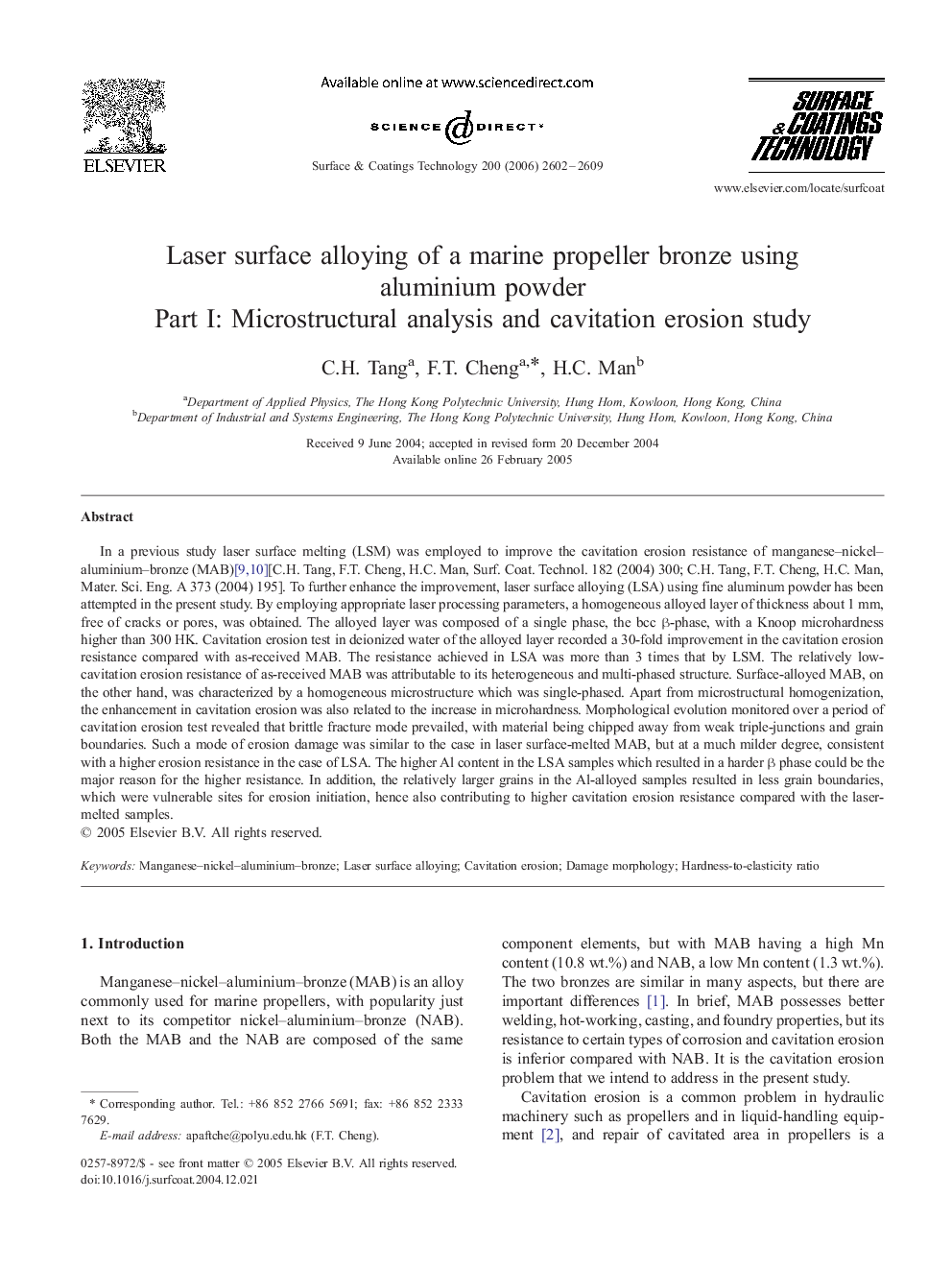| Article ID | Journal | Published Year | Pages | File Type |
|---|---|---|---|---|
| 1662849 | Surface and Coatings Technology | 2006 | 8 Pages |
In a previous study laser surface melting (LSM) was employed to improve the cavitation erosion resistance of manganese–nickel–aluminium–bronze (MAB)[9] and [10][C.H. Tang, F.T. Cheng, H.C. Man, Surf. Coat. Technol. 182 (2004) 300; C.H. Tang, F.T. Cheng, H.C. Man, Mater. Sci. Eng. A 373 (2004) 195]. To further enhance the improvement, laser surface alloying (LSA) using fine aluminum powder has been attempted in the present study. By employing appropriate laser processing parameters, a homogeneous alloyed layer of thickness about 1 mm, free of cracks or pores, was obtained. The alloyed layer was composed of a single phase, the bcc β-phase, with a Knoop microhardness higher than 300 HK. Cavitation erosion test in deionized water of the alloyed layer recorded a 30-fold improvement in the cavitation erosion resistance compared with as-received MAB. The resistance achieved in LSA was more than 3 times that by LSM. The relatively low-cavitation erosion resistance of as-received MAB was attributable to its heterogeneous and multi-phased structure. Surface-alloyed MAB, on the other hand, was characterized by a homogeneous microstructure which was single-phased. Apart from microstructural homogenization, the enhancement in cavitation erosion was also related to the increase in microhardness. Morphological evolution monitored over a period of cavitation erosion test revealed that brittle fracture mode prevailed, with material being chipped away from weak triple-junctions and grain boundaries. Such a mode of erosion damage was similar to the case in laser surface-melted MAB, but at a much milder degree, consistent with a higher erosion resistance in the case of LSA. The higher Al content in the LSA samples which resulted in a harder β phase could be the major reason for the higher resistance. In addition, the relatively larger grains in the Al-alloyed samples resulted in less grain boundaries, which were vulnerable sites for erosion initiation, hence also contributing to higher cavitation erosion resistance compared with the laser-melted samples.
